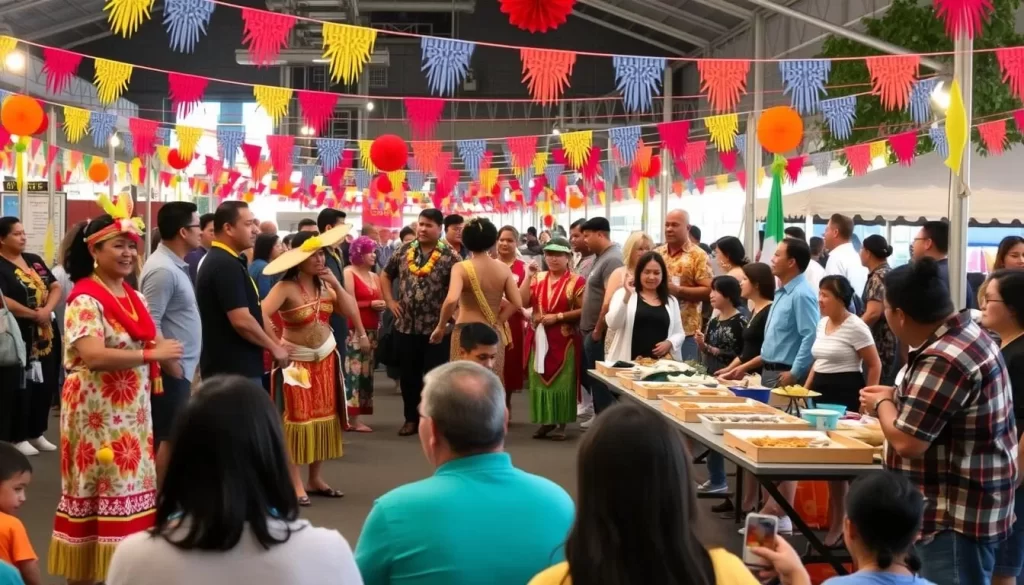✓ Accommodations✓ Flights✓ Rental Cars✓ Tours & Activities
As you explore the diverse population of Utah, you’ll find that the state’s linguistic landscape is shaped by its immigration history and the presence of Native American communities.
While English is the official language, many residents speak other languages at home. In fact, around 15.4% of the population, which translates to over 520,000 people, speak a language other than English in their households.
This diversity is a reflection of the state’s cultural makeup, with 5.22% of the population having limited English proficiency. As you delve into the world of languages in Utah, you’ll understand the importance of translation and interpretation services in various sectors.
The Linguistic Landscape of Utah
Utah’s linguistic landscape is a reflection of its diverse population and cultural heritage. You will find that the state’s language dynamics are shaped by its official language, as well as the various languages spoken by its residents.
English as the Official Language
English holds the official language status in Utah, established through legislation. Initially, it was made the sole language for government operations, though later amendments allowed for greater inclusivity. You should note that the majority of Utah’s 3.38 million residents speak English.

Language Diversity Statistics
Among residents aged five and up, approximately 15.4% (around 520,643 people) speak a language other than English at home. Additionally, about 5.22% of the population (approximately 176,478 residents) are considered to have limited English proficiency (LEP). This data has significant implications for education, healthcare, and government services in Utah.
Utah’s Immigration History and Its Impact on Language
You might be surprised to learn how Utah’s immigration history has impacted the languages spoken today. The state’s linguistic landscape has been shaped by various waves of immigration, starting with the Native American populations who were the original inhabitants of the region.
Early Mormon Settlement
In 1847, Mormon settlers arrived in Utah and established a largely self-sufficient system. This marked a significant turning point in the state’s cultural and linguistic development. The Mormon settlers brought their own language and culture, which would eventually influence the linguistic landscape of the region.
Subsequent Immigration Waves
By the late 1860s, settlers from other backgrounds began to arrive in Utah, drawn by the region’s natural resources and economic opportunities. These new immigrants brought their native languages and contributed to the growing linguistic diversity in the state.

Population Distribution and Language Communities
Today, the population of Utah is primarily concentrated in major cities along the Wasatch Front, including Salt Lake City, Provo, and Brigham City. This concentration has resulted in the formation of distinct linguistic neighborhoods and cultural enclaves. The table below illustrates the population distribution and language communities in Utah.
| Region | Population | Languages Spoken |
|---|---|---|
| Wasatch Front | Majority of the population | Multiple languages, including English, Spanish, and Chinese |
| Rural Areas | Smaller population | Primarily English, with some Native American languages |
The immigration history of Utah has played a significant role in shaping the state’s linguistic landscape. As a result, you can find a diverse range of languages spoken in the state, with communities maintaining their linguistic heritage while adapting to life in Utah.
Utah, United States: Official and widely spoken languages
As you explore Utah, you’ll discover a tapestry of languages spoken across the state. With a diverse population and a rich cultural heritage, Utah is home to a multitude of languages that reflect its history and the communities that reside there.
Spanish: Utah’s Most Common Non-English Language
Spanish is the most widely spoken non-English language in Utah, with an estimated 297,926 speakers, making up over 10.26% of the state’s population. This significant presence reflects the substantial Hispanic and Latino communities throughout Utah.
Chinese Languages in Utah
Chinese languages, including Cantonese and Mandarin, are spoken by approximately 16,328 Utah residents, giving them a population share of about 0.56%. This highlights the growing Chinese community in the state.
Pacific Islander Languages: Ilocano, Samoan, and Hawaiian

Ilocano, Samoan, Hawaiian, and other Austronesian languages are spoken by around 13,048 Utahns, comprising nearly 0.45% of the state’s population. This reflects Utah’s unique connection to Pacific Island cultures.
European Languages: Portuguese, German, and French

European languages continue to have a presence in Utah, with Portuguese spoken by an estimated 12,483 residents (0.43% of the population), German by approximately 8,760 people (0.30%), and French by around 7,380 speakers (0.25%). These languages represent historical immigration patterns from these regions.
Native American Languages: Navajo

Navajo is spoken by approximately 7,767 Utah residents, making up nearly 0.27% of the population. This preserves an important cultural connection to the region’s indigenous past.
Asian Languages: Vietnamese, Tagalog, and Korean

Asian languages such as Vietnamese (7,452 speakers), Tagalog (5,793 speakers), and Korean (5,374 speakers) are also among the top languages spoken in Utah, collectively representing nearly 0.65% of the state’s population.
Other Notable Languages
Utah’s linguistic diversity extends beyond these languages, with many other languages spoken across the state, contributing to its rich cultural tapestry.
The diversity of languages spoken at home across Utah reflects the state’s complex immigration history and ongoing cultural connections, with approximately 15.4% of residents aged five and older speaking a language other than English in their households.
Language Access and Services in Utah
As Utah’s linguistic diversity continues to grow, the importance of language access services becomes increasingly evident. You need to communicate effectively with a diverse population, and language services can help.
Translation and Interpretation Services
You’ll find that professional interpretation services cover over 200 languages, with various delivery methods including on-site, over-the-phone, and video remote interpretation. This ensures communication access for limited English proficiency populations. Acutrans, a leading language services provider, maintains the highest standards to ensure top-quality results.
Acutrans’ professional interpretation services are available for various industries, including healthcare and legal. They also provide certified document translations in 24 hours or less, along with general translation, post-machine translation, and localization services.
Language Rights and Resources
Civil rights laws are pushing for better language access, mandating that businesses and agencies receiving federal funding provide interpreters and translated materials for people with limited English proficiency. Hospitals, for example, must translate vital documents into the 15 most common languages in their service areas.
You should be aware that language access services are increasingly important in Utah, with translation and interpretation services becoming essential for businesses, healthcare providers, government agencies, and educational institutions.
Conclusion
You’ve seen how Utah’s official language coexists with a vibrant array of other languages spoken across the state. The data presented in this article highlights the importance of language services, including translation, interpretation, and localization, to cater to the needs of Utah’s diverse population. As the state’s demographics continue to evolve, industries such as healthcare and government must adapt to ensure effective communication with all residents. Recognizing the value of language diversity and promoting language rights is crucial for creating an inclusive society where all individuals can participate fully.
The above is subject to change.
Check back often to TRAVEL.COM for the latest travel tips and deals.






